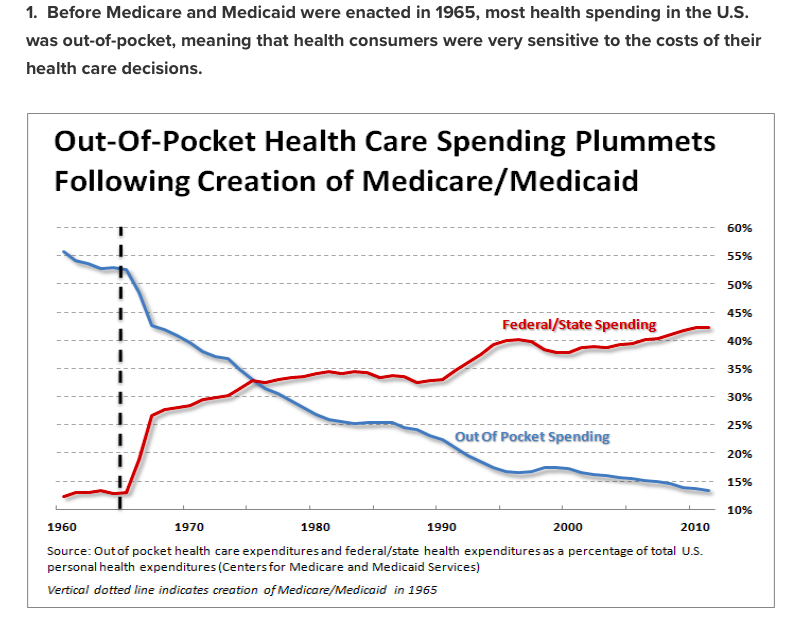
That tweet was recent.
I know of a few hundred million people who’d probably be willing to debate the statement — except they’re in prison or were already murdered.
Democratic-Socialist Alexandria Ocasio-Cortez (who called for tax cuts when she was running her own business) famously wants “healthcare, housing, and education for all,” and plans to fund it by “raising taxes.”
Forget, for a moment, the fact that NO amount of taxation — not even 100 percent — could ever actually provide all this, as many on her side correctly noted. I have a more fundamental question for her:
Do you know how a single pencil is made, Ms. Cortez? Do you know why pencils in America are so abundant and inexpensive, and why (therefore) even the poorest have easy access to them — whereas in certain socialized countries, pencils are scarce and expensive?
It’s an absurdly old and common tactic among government-lovers of all stripes to implement state regulations which create deeper problems, and to then blame the “free market” for these deeper problems which the government controls created in the first place, so that now deeper controls can be demanded.
It’s so common, in fact, that it’s cliche. But it doesn’t change the fact that it’s government intervention and violation of property that created the problems to begin with.
Like virtually all socialists, Alexandria Ocasio-Cortez doesn’t understand even rudimentary economics — but I have good news for her: “free” healthcare, housing, and education for all already exists in the United States — in fact, all throughout the United States — and I wonder if she knows where.
Answer:
Indian Country — i.e. the Native American Indian Reservations — where healthcare and education are 100 percent free, housing is fully provided by money that pours freely in, and food as well is provided. Here also property is not private (a core feature of socialism, in any of its variations) but instead is shared and held in trust by a benevolent bureaucracy which oversees everything, and which grants more money to these places than to any other single place in the United States.
Here the leading cause of death among young men is suicide.
These Utopias also have the highest rate of poverty among ANY racial group in the country — more than twice the national average — and are often environmentally dirty and unsanitary, all of which is quite strange, when you think about it, considering their Utopian nature and the sheer amounts of money they receive.
They also have the highest unemployment rates in the country, and perhaps there is a clue there:
In 2016, the last year for which the census data is available, the average household income on reservations was approximately 70 percent below the national average of $57,617. Just over 20 percent of those households earned less than $5,000 a year. More the 25 percent of the reservation populations live below the official poverty level, compared with 13 percent of the United States as a whole.
I respectfully request all self-proclaimed Democratic-Socialists, or anyone even remotely leaning that way, spend some time in Indian Country.
I also strongly recommend reading about the socialist roots of the Reservation System, which is by any standard imaginable an unmitigated catastrophe.
Anent healthcare, I’d like to point out something else, as well.
Healthcare in America has long been over fifty percent socialized (here’s how it all began). The following charts, which are super easy to understand, show in no uncertain terms how medical costs have risen astronomically in direct proportion to third-party payment — and that includes insurer pre-paid healthcare (which is NOT actual insurance, incidentally, and which is also a big part of the problem).
Here are five charts which show the very clear progression and correlation of rising healthcare costs and socialized medicine in America:





The same sort of principle is at work in, for instance, many places in California, and it’s why socialization has made housing unaffordable to all but the very wealthy.
How Big-Government Housing Policies Made San Francisco Unaffordable for All but the Rich:
Despite the insistence that they’re all about helping the disadvantaged, progressive policy has the actual effect of creating a place where only the rich can afford to live….
“Despite the fact that many of the homes and apartments are small and located close together, San Francisco now has the highest rent in the world,” wrote Rachel Alexander in Townhall. “The average monthly rent is $3,500. A median-priced home sells for $1.5 million, but only a paltry 12 percent of residents can afford this.”
Why Is Housing so Expensive?
Read the the full answer here (it’s pretty short).
Read also why California’s once-beautiful cities are becoming unlivable (also short).

Conversely — and this is important — over the past two or so decades, U.S. medical prices have risen at approximately 5 percent every year, whereas prices for Lasik an other cosmetic surgery, which are not covered by a third-party payment system, have fallen.
You may see the unequivocal data from the American Society for Aesthetic Plastic Surgery here and here. This is some of what you’ll find:
1. For the top ten most popular cosmetic procedures displayed above for last year, none of them has increased in price since 1998 more than the 47.2% increase in overall consumer prices, meaning that the real, inflation-adjusted price of all ten of those procedures has fallen over the last 18 years.
2. For the three most popular procedures in 2016 (botox, laser hair removal, and chemical peel?–?all nonsurgical cosmetic procedures), the nominal price for each has actually fallen since 1998 by large double-digit percentage declines of -11.3%, -21.7% and -34.8% respectively.
That is, the prices for those procedures have fallen in price since 1998 measured in current dollars, even before making any adjustments for inflation. Note also that the demand for those three procedures has increased dramatically, especially botox procedures (29-time increase since 1998) and laser hair removal (9.5-time increase).
3. The two most popular surgical cosmetic procedures last year were liposuction and breast augmentation, which have increased in current dollar prices by 30.6% and 26.2% respectively since 1998. Both of those average price increases were less than the 47.2% increase in consumer prices over the last 18 years, meaning that the real, inflation-adjusted prices for liposuction and breast augmentation procedures have fallen since 1998.
4. The average price increase between 1998 and 2016 for the 20 cosmetic procedures displayed above was 32%, which is less than the 47.2% increase in consumer prices in general. Of the 20 procedures above, 14 increased in price by less than overall inflation (and therefore decreased in real terms) and only six increased in price by more than inflation.
And most importantly, none of the 20 cosmetic procedures in the table above have increased in price by anywhere close to the 100.5% increase in the price of medical care services or the 176.7% increase in hospital services since 1998.
(Link)
Here is another chart that shows the rising costs of healthcare since 1970 as America has increasingly moved to third-party payment.
I know that socialism, whether democratic or otherwise, is trendy. I know it’s hip. I know it’s all the rage.
But I know also that it won’t work. I know that it cannot work: it is impossible mathematically. It’s doomed to fail because of the calculation problem, among other things. But even more:
Nobody — no matter how supposedly charismatic the politician, no matter how big the bureau (Obama and Clinton ICEd as many people as dumbfuck Donald, and not even the extremely liberal ACLU really denies it) — nobody has the right to the life or property of another.
Life, freedom, the sanctity of the individual, independent thought — these are timeless.
They are beyond trendy and hip and faddish — because they are right and they are true.
And once you concede that principle — which virtually everybody, right, left, or middle has — you can never again properly defend the sanctity of your person and property — i.e. laissez-faire and individual rights.










